Before even considering heat options for chicken coops, it’s vital to properly winterize the coop- learn how HERE.
Fires like this occur every year in coops and barns due to heat lamps installed with the best of intentions. I’ve been tracking heat lamp fires on this Pinterest board for years and these are only some of the heat lamp fire incidents that made it to media outlets- there are countless additional near-misses and close calls when someone intervened before a tragedy occurred.
Regardless of where you ultimately come down on the issue of heating the chicken coop, please understand that a chicken’s physiology is not the same as a person’s. Our perception of how cold we would be in the coop at night is not the same as a chicken’s perception of their own comfort level.
Chicken Physiology & Anatomy
Chickens are anatomically and physiologically very different from people and have unique attributes that allow them to regulate their body temperatures very well in cold weather. The average body temperature of a chicken ranges between 104°-107°F (daytime rectal temp is even higher at 105-109.4).
How a Chicken Regulates Body Temperature
Without interference from well-meaning caretakers, chickens will naturally acclimate to the changes in temperature from warm weather to cold over time. Additionally, chickens can increase their body temperatures by eating more chicken feed in cold weather. Digestion creates internal heat, that heat radiates through the skin, which warms the air next to it, which is then trapped against its body by feathers. Chickens are tiny, food-fueled furnaces wrapped in down jackets!
A chicken is also able to conserve body heat by restricting blood-flow to its comb, wattles and feet, the very parts of the body that give off excess heat in warm weather. Not only do they have mechanisms to keep themselves comfortable in the cold, they huddle together on the roost at night.
IF you decide to add heat to the chicken coop in the winter, please put safety first in choosing a heat source. NEVER use a heat lamp with chickens!
Radiant, flat panel heaters are a safe alternative to dangerous 250 watt heat lamps. With a zero clearance requirement, it can be mounted on the ceiling or wall without fire danger.
Another safer heat option to raise the temperatures inside the coop a few degrees is an oil filled radiator, BUT the inclination may be to heat the coop instead of just raising the temperatures a few degrees. That temptation should be resisted! The coop should not vary in temperature drastically from outside temps. These units would also need to be carefully monitored and vacuumed regularly due to the dust inherent to chicken coops.
Automatically regulate the use of electric heat sources such as a flat panel heater or cookie tin water heater by utilizing a device like the Thermo Cube TC3, which will turn the power on at 35°F and off at 45°F. (there are other models that turn on at 0, off at 10, on at 20, off at 30)
Plan for power failure. If you do not have a generator to power a heat source to the coop during a blackout, do not heat the coop at all. Chickens have died and will die as a result of sudden drops in temperature from a power outage when the coop is heated.
Kathy Shea Mormino
Affectionately known internationally as The Chicken Chick®, Kathy Shea Mormino shares a fun-loving, informative style to raising backyard chickens. …Read on


shop my SPONSORS
Before even considering heat options for chicken coops, it’s vital to properly winterize the coop- learn how HERE.
Fires like this occur every year in coops and barns due to heat lamps installed with the best of intentions. I’ve been tracking heat lamp fires on this Pinterest board for years and these are only some of the heat lamp fire incidents that made it to media outlets- there are countless additional near-misses and close calls when someone intervened before a tragedy occurred.
Regardless of where you ultimately come down on the issue of heating the chicken coop, please understand that a chicken’s physiology is not the same as a person’s. Our perception of how cold we would be in the coop at night is not the same as a chicken’s perception of their own comfort level.
Chicken Physiology & Anatomy
Chickens are anatomically and physiologically very different from people and have unique attributes that allow them to regulate their body temperatures very well in cold weather. The average body temperature of a chicken ranges between 104°-107°F (daytime rectal temp is even higher at 105-109.4).
How a Chicken Regulates Body Temperature
Without interference from well-meaning caretakers, chickens will naturally acclimate to the changes in temperature from warm weather to cold over time. Additionally, chickens can increase their body temperatures by eating more chicken feed in cold weather. Digestion creates internal heat, that heat radiates through the skin, which warms the air next to it, which is then trapped against its body by feathers. Chickens are tiny, food-fueled furnaces wrapped in down jackets!
A chicken is also able to conserve body heat by restricting blood-flow to its comb, wattles and feet, the very parts of the body that give off excess heat in warm weather. Not only do they have mechanisms to keep themselves comfortable in the cold, they huddle together on the roost at night.
IF you decide to add heat to the chicken coop in the winter, please put safety first in choosing a heat source. NEVER use a heat lamp with chickens!
Radiant, flat panel heaters are a safe alternative to dangerous 250 watt heat lamps. With a zero clearance requirement, it can be mounted on the ceiling or wall without fire danger.
Another safer heat option to raise the temperatures inside the coop a few degrees is an oil filled radiator, BUT the inclination may be to heat the coop instead of just raising the temperatures a few degrees. That temptation should be resisted! The coop should not vary in temperature drastically from outside temps. These units would also need to be carefully monitored and vacuumed regularly due to the dust inherent to chicken coops.
Automatically regulate the use of electric heat sources such as a flat panel heater or cookie tin water heater by utilizing a device like the Thermo Cube TC3, which will turn the power on at 35°F and off at 45°F. (there are other models that turn on at 0, off at 10, on at 20, off at 30)
Plan for power failure. If you do not have a generator to power a heat source to the coop during a blackout, do not heat the coop at all. Chickens have died and will die as a result of sudden drops in temperature from a power outage when the coop is heated.



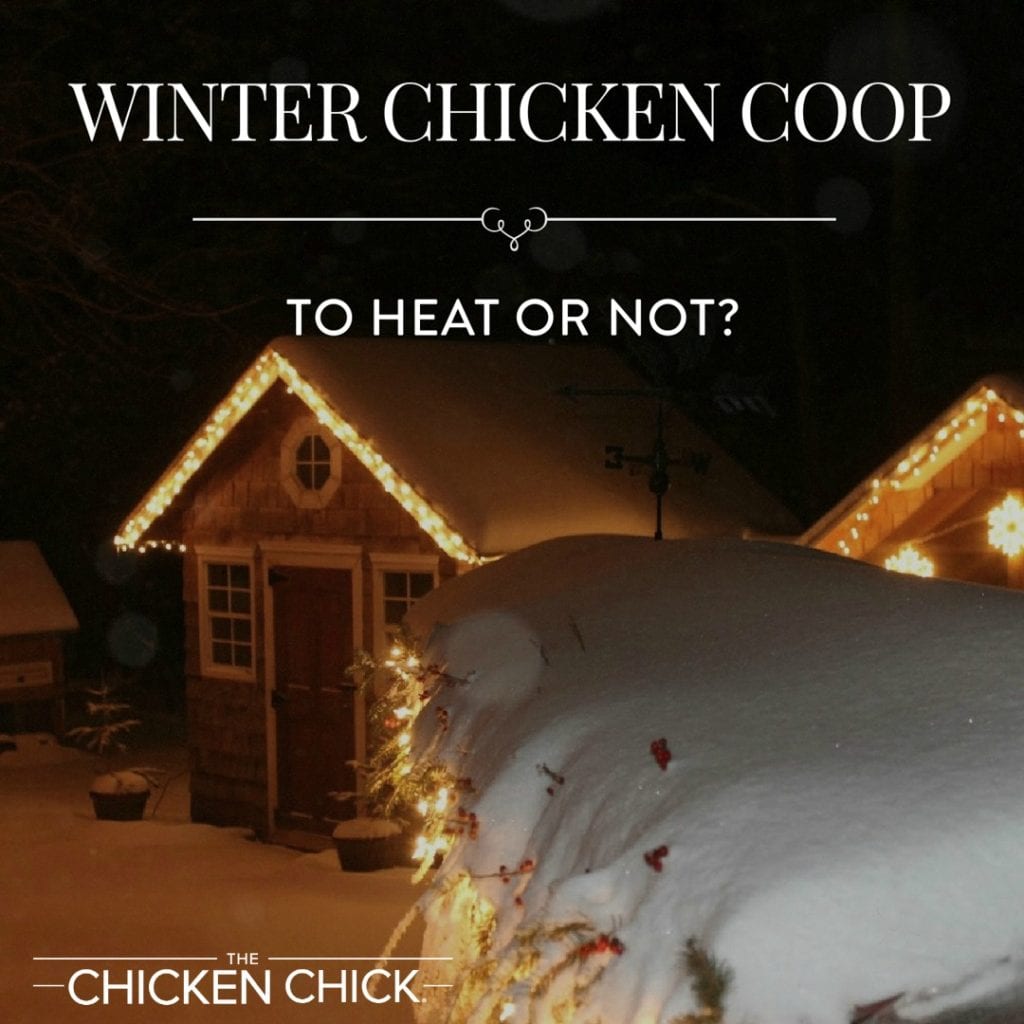
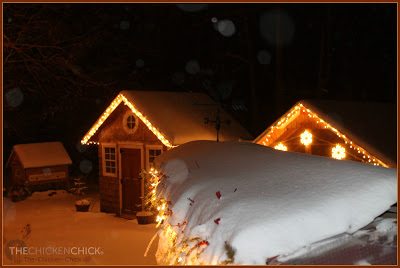
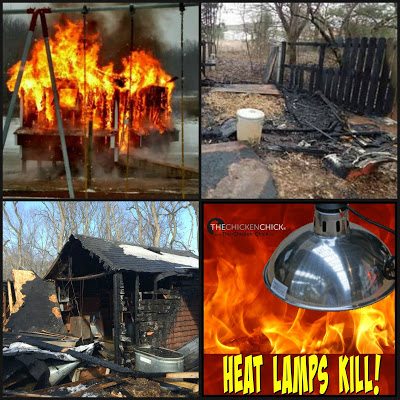
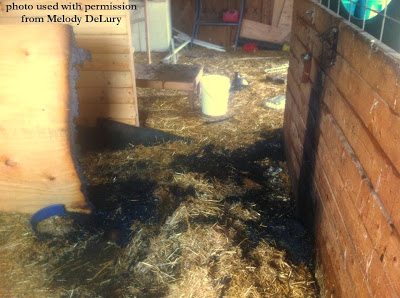
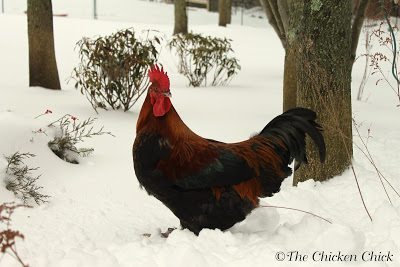

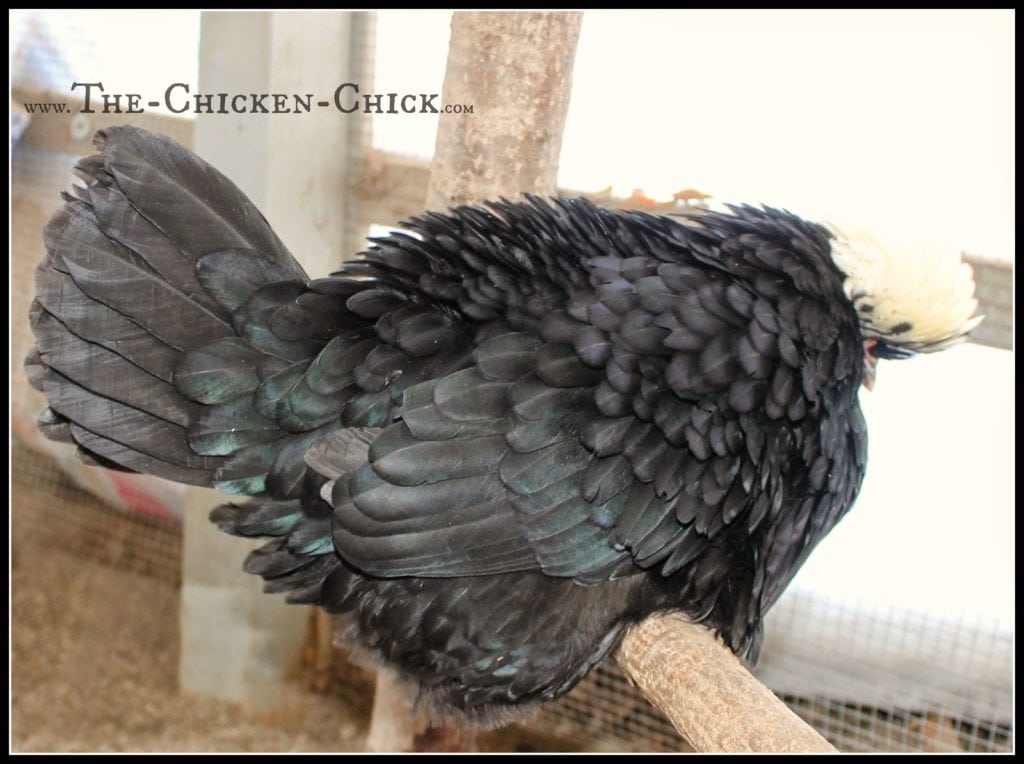
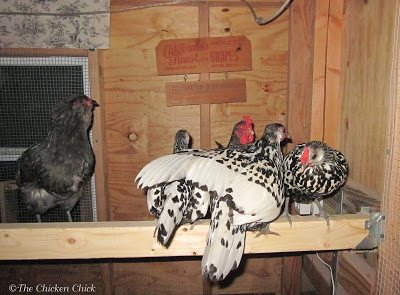
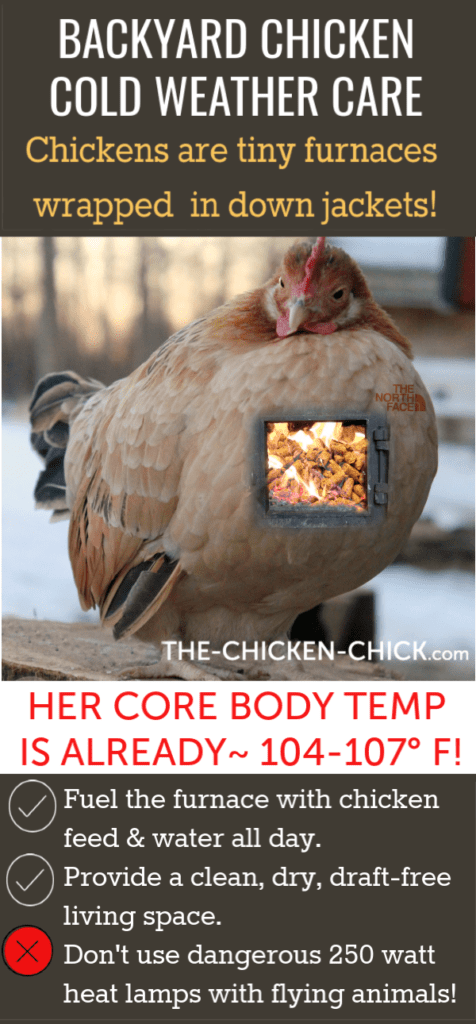
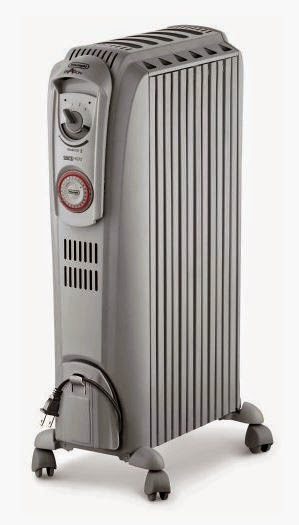
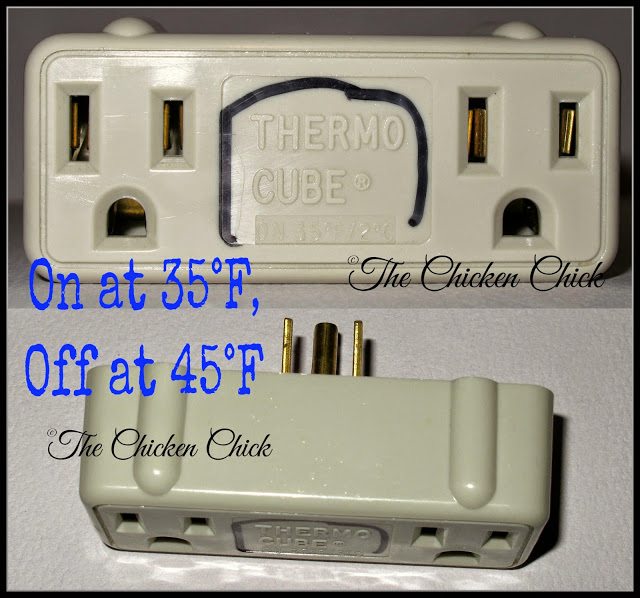
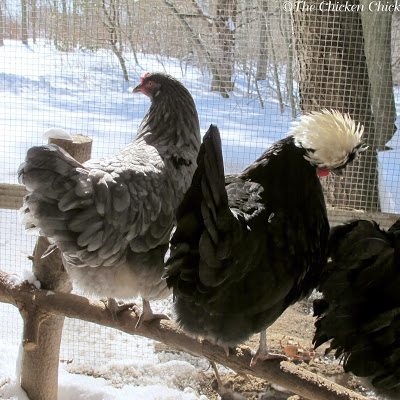
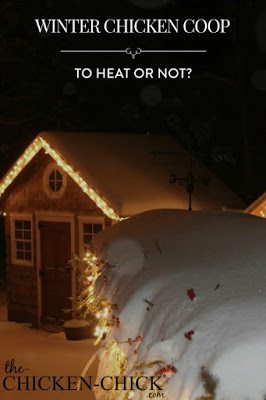
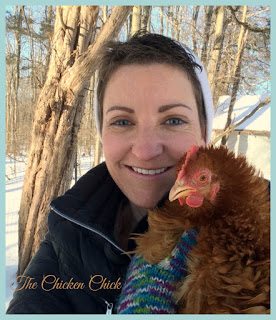














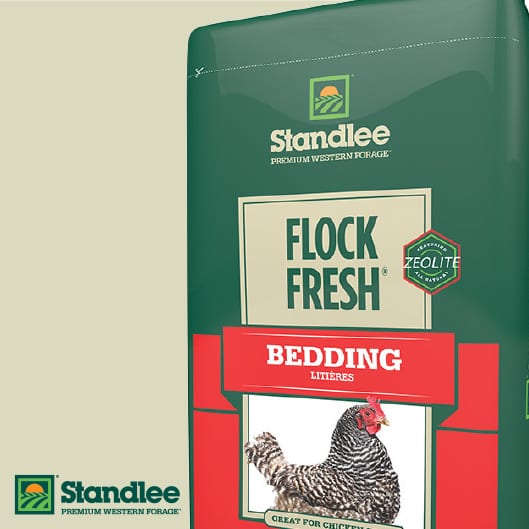

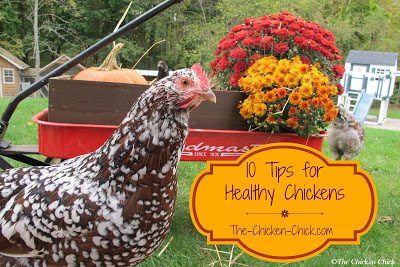










That explains it. Their diet is way out of whack and they cannot produce eggs properly or continue to be healthy with that diet. You should ONLY feed them layer feed with oyster shell in a separate container. Cut out scratch forever. It’s total junk food for chickens. All the rest, while there may be some healthy items in the treats you’re giving them, they are messing up their ability to make eggs correctly and they’re going to die prematurely if it’s not straightened out. Again, a complete commercial layer feed and oyster shells should be the only things they… Read more »
scratch grain and layer feed, lettuce, cabbage, any thing out of the yard cause I let them room before dark, snack treats, and if I find any thing else I think they might like
I would love one of these heaters for my girls. In Michigan it can get pretty cold at night.
Hi Kathy, this is our first winter as chicken parents and your articles have helped us out a lot. Thank you. I am concerned with the heavy rain we are getting in the SF Bay Area in California. My chickens are getting wet during the day! They don’t seem to mind but I worry that the dampness could possibly make them sick? It is not cold at all. When it rains here the temp usually sits between 55 and 60.
When temperatures dropped below zero here in North Carolina this week, I temporarily moved the flock into the garage, which isn’t heated, but stays above freezing since it is adjacent to the house. The girls are moving back out today, but I do worry about my 7-month old frizzled cochin, Gidget, who immediately starts shivering when she goes out on the snow and ice each day. With her backwards-curling feathers, is she able to stay warm the way the other breeds are? Do you provide anything different for Rachel during cold snaps in Connecticut? The forecast has temperatures reaching the… Read more »